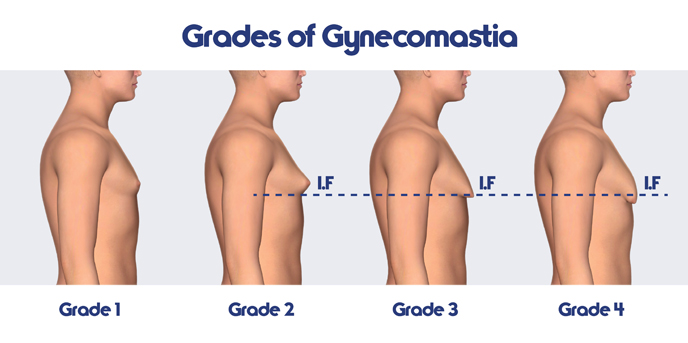In this leaflet you will find general information about the possible causes and complaints of breast formation in the man (gynaecomastia) and the most common treatment options.
What is gynecomastia and how does it occur?
As a baby, both girls and boys have small clothes discs behind the nipple. Normally, these chatter discs disappear in the boys in childhood. During puberty, breasts develop under the influence of hormones in girls.
In boys it is also common that during puberty the breast glands start to swell under the influence of hormones. This is a normal response of the mammary gland to hormones. Usually the mammary glands swell on both sides, but it can also be single-sided. The enlargement that arises during adolescence usually lasts for a short time, but can also last more than three years.
At the baby age and puberty, this mammary swelling in the man is ‘physiological’. That is, it is not abnormal, but a normal response is from the mammary gland to hormones.
What are possible causes of breast formation in men?
From middle age, the mammary gland in the man can also swell during aging. That too is considered physiological. However, other causes can also play a role in the development of breast formation in old age:
- Side effect of certain medications.
- Reaction to metabolic alterations in liver and kidney disease.
- Change in the production of the hormones (too little production due to testicle, stress).
- Swallowing of hormones.
- Hormone-producing tumors of testicles or airways.
- Breast cancer in the man.
- Usually, however, no cause can be found in non-physiological breast formation.
- A mammary gland enlargement in male is usually felt as an elastic swelling of about one or two centimeters behind the nipple.
There can also be question of pseudo-gynaecomastia: the mammary gland itself is not abnormal, but due to fat deposits it seems as if breast formation has taken place.
How is breast development studied?
Your doctor may propose that you do additional research on you:
- Physical examination of the breasts
- Mammography of the breasts
- Ultrasound of the mammary gland
- Physical examination of the testicles
- Ultrasound of the testicles
- Blood collection to examine certain substances in the blood
When a malignant condition is suspected, a cell examination can be used after a puncture of the mammary gland tissue. A needle is then pricked with tissue to obtain cells.
Which complaints can cause breast formation?
- Pain symptoms
- Annoying eg wearing a backpack or suspenders
- Cosmetic objections, that is to say that you do not find the gynecomastia fit with the body.
- Worry
Which treatment is possible?
With physiological breast formation it is important that the doctor can reassure you and he / she proposes to wait a while to see how it goes. In the case of non-physiological breast formation, a treatment plan is drawn up depending on the cause. For example, if breast formation is a result of medication use, it is checked whether this medication can be replaced or whether you should stop using this medicine.
If the cause is not clear, an operation can be decided depending on the circumstances and the complaints. In this process, the glandular tissue is removed under the nipple. This tissue is examined by the pathologist’s anatomist. You will receive the results of this tissue examination if you go to the surgeon after 10-14 days after the operation.
Note: In the case of benign breast formation, the health insurer considers the operation as a cosmetic procedure. This means that you must submit an application to the health insurer to obtain approval for the procedure.


